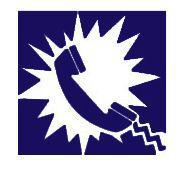SAS Urban Survival Handbook (107 page)
Read SAS Urban Survival Handbook Online
Authors: John Wiseman
Tags: #Health & Fitness, #Reference, #Survival, #Fiction, #Safety, #Self-Help, #Personal & Practical Guides, #General, #Survival Skills

The threat of terrorism is no longer limited by distance. Terrorists, if unknown, can use any form of transport and move as easily as any innocent traveller. In recent years, terrorist attacks have included shootings, hijacks and bombings. Bombs mailed as packages or hidden in cars are probably the most common. They may be detonated by movement, a timer mechanism or by remote control.
ARE YOU AT RISK?
Some countries, and particular cities, have a high incidence of terrorist activity. Although terrorists can strike anywhere and at any time, it is wise to be aware of world affairs and in which countries there is likely to be a terrorist threat to YOU. If you are going on holiday to a country which has a history of political instability, be aware of how this could affect you and if necessary alter your plans and defer the trip to a safer time.
Military personnel and government employees are always at risk, but if you are connected to a group/company/organization whose activities may attract terrorist attention—YOU could be a target. If you only live or work near a likely target you could also be at risk.
IF YOU BELIEVE YOU ARE A POTENTIAL TERRORIST TARGET, SEEK ADVICE FROM THE POLICE
Even if you, your workplace or your home are unlikely terrorist targets we are all vulnerable to attacks in public places. In many cases terrorist attacks have been directed at military and government targets, but things have changed. Department stores, airports, railway stations and underground stations—almost any busy, public place—could now be ‘high risk’. Body and bag searches are common during known periods of terrorist activity.
PRIME TARGETS
Although attacks on the general public are fairly indiscriminate, statistics help us identify and protect certain groups of people who are always at risk from some form of terrorism. It’s not possible to account for the effects of sudden political change or war – either of which could suddenly tip the balance against you.
| HIGHTEST RISK: | LOWER RISK: |
| ■ Government officials | ■ Civil servants |
| ■ Industrialists | ■ Embassy officials |
| ■ Service chiefs | ■ Members of armed forces |
| ■ Celebrities | ■ Familis of all the above |
If you are a prime target
- ◑ Follow security advice (see SECURITY) regarding home, workplace and telephone.
- ◑ DON’T advertise your presence or your movements—even a wedding announcement could tell an assassin where you are going to be at a certain time.
- ◑ Book hotel accommodation under an assumed name.
- ◑ DON’T stick to a pattern. Vary transport, times and routes to work. Avoid roadworks and congested streets. Change vehicles during longer journeys.
- ◑ Make a habit of looking out of the window before leaving a building. Watch out for people loitering on foot or sitting in parked vehicles.
- ◑ Glance over your shoulder frequently—but unobtrusively, you DON’T want to attract attention—and use reflections in shop windows to see if you are being followed.
- ◑ Be ‘friendly’ with neighbours. You may need them to let you know if anyone is asking questions or taking an unusual interest in you—but DON’T divulge your business or movements to them.
- ◑ Telephone ahead when making journeys and telephone base when you arrive.
- ◑ Arrange a coded phrase to be used if you are in danger or under duress and need help. Choose an arrangement of words that can be fitted into normal conversation. It can be anything which sounds innocent—‘I didn’t bring a raincoat’, ‘The roads were clear’, ‘Sorry. This is a really bad line’.
BOMBS
 The most feared and most commonly used weapon in the terrorist’s arsenal is the bomb. Modern technology serves the terrorist well with ever-more reliable and complexdetonation systems and increasingly-powerful explosive substances. A bomb does not care who it kills—this knowledge and the fear that it creates in innocent people, is why the bomb is the ultimate weapon of terror.
The most feared and most commonly used weapon in the terrorist’s arsenal is the bomb. Modern technology serves the terrorist well with ever-more reliable and complexdetonation systems and increasingly-powerful explosive substances. A bomb does not care who it kills—this knowledge and the fear that it creates in innocent people, is why the bomb is the ultimate weapon of terror.
Bomb detection
Dogs, with their very powerful sense of smell, have been trained to detect the presence of most explosives. Police forces and anti-terrorist organizations around the world use sniffer dogs. There are some types of explosive, particularly plastic ones, which are odourless and very difficult to detect.
Metal detectors can be used to scan packages and luggage—metal is an essential part of bomb-making—but it is also found in many everyday items. The most effective application is screening for parcel and mail bombs. Hand-held detectors are suitable for small offices and mailrooms. For rapid scanning of large numbers of items a larger fixed apparatus will be needed. Some are capable of handling 9000 packages an hour and taking parcels up to 5 cm (2 in) thick.
X-rays can be used to ‘see’ into packages and luggage. X-ray machines are the most efficient way of screening for bombs—they are used at all international airports. The operator must be expertly trained to identify suspect devices quickly, since thousands of pieces of hand luggage must be scanned per day.
Save lives!
Few terrorists set out on suicide missions. Bombs, the most common form of attack, are usually planted and detonated once the bomber has escaped. By being constantly aware and keeping an eye out for abandoned/suspect cases or packages (especially on transport systems and in public places), you may save yourself and others from injury or death. If you see a suspicious package or container:
- ◑ DO NOT touch it—moving it may trigger an explosion.
- ◑ DO NOT shout ‘Bomb’. This could cause dangerous panic.
- ◑ Move away and tell others to do the same—but tell them quietly and calmly.
- ◑ If you are on a moving underground/subway train, do NOT activate the alarm between stations. In some countries the train will stop immediately, which could jolt the package. Usually the emergency signal only alerts the driver, who will stop the train at the next station.
- ◑ On trains with doors between carriages, tell other people to move away and then alert the guard/conductor.
- ◑ If you see someone leave a bag or package behind, call after them. If they deny any association or just run off, treat the object as suspect.
- ◑ Make a mental note of the appearance of the person. Your description of them may prove vital later (see SELF-DEFENCE:
Being a witness
). - ◑ If you have a camera with you, take a photograph—even a back view may be helpful in identification.
- ◑ Inform a police officer or other responsible official or telephone a police emergency number.
If you receive a bomb threat
 Most threats or warnings are given by telephone. If you take such a call it is VITAL to remember all that is said accurately. Write points down as they occur. Try to get as much information as possible. This may be possible by direct questioning or by pretending that you think the call is a practical joke—more details may be given by the caller to persuade you.
Most threats or warnings are given by telephone. If you take such a call it is VITAL to remember all that is said accurately. Write points down as they occur. Try to get as much information as possible. This may be possible by direct questioning or by pretending that you think the call is a practical joke—more details may be given by the caller to persuade you.
Telling the caller that children are at risk or otherwise appealing to his/her humanity—‘surely you don’t want to kill innocent children’—may gain time or information on how to prevent an explosion. Give details of the call to the police or a security officer IMMEDIATELY. If facilities are available, threat calls should be recorded.
Information needed
ALL information about the caller and about the call is VITAL for anti-terrorist and police action. A check list should be available by EVERY telephone in the workplace—whoever takes the call may be frightened or flustered. It will help to ensure that you get the following information:
CALL CHECK LIST
- 1
The message (word-for-word if possible) including any codewords - 2
Gender of caller: male/female - 3
Age group of caller: child/adolescent/adult/elderly - 4
Speech style of caller: rapid, slow, calm, excited, accented, unusual or frequent use of words - 5
Background noises - 6
Time - 7
Date - 8
Your name
Hoax or real?
A hoax threat (without a bomb being placed) causes considerable disruption. It is illegal, dangerous and STUPID. Fear and panic are the obvious results. Knock-on effects may disrupt the lives of thousands of innocent people, through chaos on public transport or loss of working time for example. There is always the danger that a hoax may be part of a pattern to distract attention from a real bomb placed elsewhere—or a series of hoaxes may be designed to encourage a real warning to be ignored. There are many more hoaxes than genuine threats, but no threat can be dismissed until it has been very carefully assessed. People at risk MUST, of course, be protected. Always ask yourself:
- ◑ Does the call fit into a pattern of previous terrorist attack?
- ◑ Is it likely that you or your workplace could be at risk from terrorist attack?
- ◑ Is there anything in the message which could identify it as a genuine threat, including details of the type of bomb?
This last question highlights why you MUST make an accurate record of the conversation. Certain phrases, even specific code-words, are known to be used by terrorist groups in their warnings. The caller may have privileged knowledge of the interior layout of a building—and say so.
Letter bombs
 A letter bomb is a clumsy terrorist weapon. Although the likelihood of the bomber being identified is reduced to a minimum, most intended victims don’t open their own mail. Letter bombs cannot easily be directed at exact targets. All mailroom staff, secretaries, family members and others who handle correspondence for a potential target (individual or organization) should understand the risks and relevant procedures. Instructions on screening should be clearly displayed wherever packages are opened.
A letter bomb is a clumsy terrorist weapon. Although the likelihood of the bomber being identified is reduced to a minimum, most intended victims don’t open their own mail. Letter bombs cannot easily be directed at exact targets. All mailroom staff, secretaries, family members and others who handle correspondence for a potential target (individual or organization) should understand the risks and relevant procedures. Instructions on screening should be clearly displayed wherever packages are opened.
There is no easy way to recognize a letter bomb—a terrorist will probably make it look as ordinary as possible—though hoax devices are sometimes made to look suspicious in the hope of causing maximum panic.
WATCH OUT!
LOOK! READ! SMELL! THINK!
Beware of any unexpected mail, especially if no sender’s name and address is given. If not addressed to you, find out if the addressee is expecting a package. Telephone the sender and check whether the package is genuine. Look out for:
